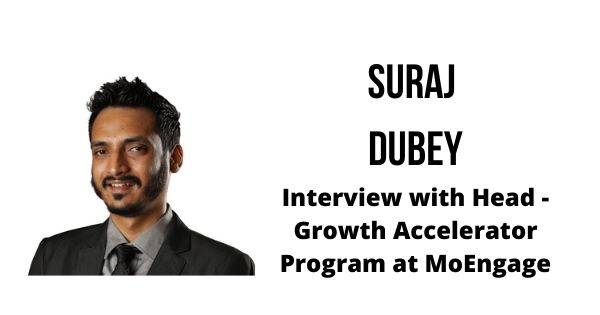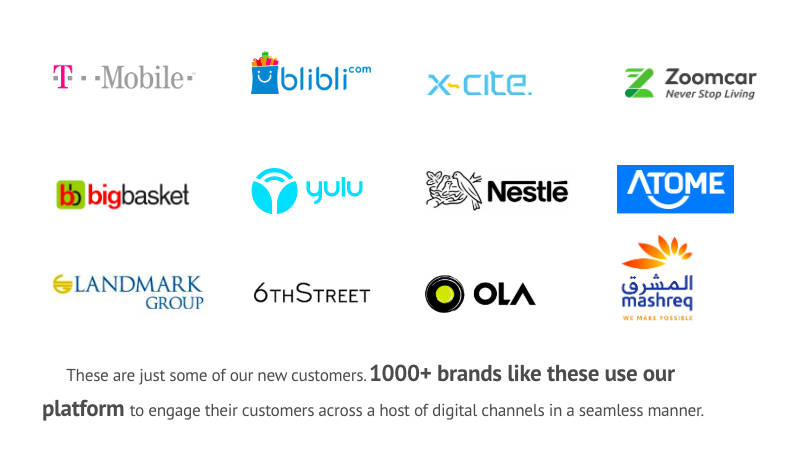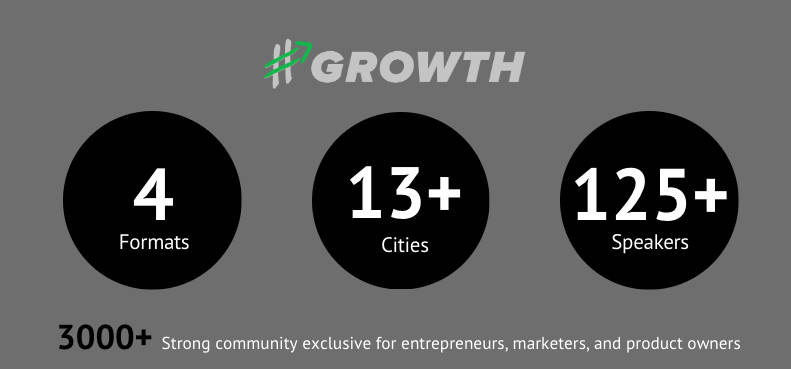In today’s day and age, when marketing isn’t just limited to one platform or channel, it’s important for companies to reach out to consumers in all manners possible. And that’s where marketing automation comes in, which makes it easier for businesses to utilize email, app and other such channels. While the space is quite competitive, San Francisco-headquartered MoEngage has made a name for itself by focusing on mobile marketing. We managed to have a conversation with Mr Suraj Dubey, Head – Growth Accelerator Program at MoEngage about the company’s inception, its competitive edge and where it goes from here.
PS: the interview has been edited for the sake of brevity.

Table of Contents
1) Before we begin talking about MoEngage, our readers would love to know your journey into the world of SaaS.
Reminiscing about his journey, Mr Dubey said, “I started with public relations as my career. And from there I moved to digital marketing and digital PR. There, I also used to handle some amount of email marketing and things like that for a couple of B2C clients. Then I got an opportunity to freelance with Ogilvy which was doing demand-gen, lead-gen, events, marketing, field marketing and a lot of things for IBM., which is their global client. So while I working in agencies, I also worked with Ogilvy for writing blogs and other such things to engage IBM’s audience. I continued that for six or eight months, and then Oglivy got me onboard. I was the account manager for IBM and took care of all aspects of social, digital and even marketing for IBM in India. They had a suite of products, like social mobility, cloud, etc. So we used to a lot of things like webinars, YouTube lives, training sessions and more. This was around 2012, and that’s where my journey started. Post that, I helped an agency set up their digital marketing practice, and managed B2B marketing for them.“
“After that, I was looking for opportunities that were looking for a content marketing person. And that’s how I kind of got myself into MoEngage four and a half years ago. I started off with content, and I was basically the only marketing person at that time. In fact, I handled the marketing solely for close to two years, taking care of everything from setting up the website to the content, and from working with vendors to drive the social media channels. Then there were events and supporting sales and pre-sales teams with a different kind of content request that they would have, such as brochures. Initially, I was working with the marketing team to help build out the team. And then, I moved to the growth accelerator program, which is focused on identifying fast-growth startups from around the world, especially in regions like Southeast Asia, or South Asia, Middle East. We partnered with them to consult them on what we can offer, discounts and more to handhold them in their growth journey.” he added.
2) Can you walk us through MoEngage’s journey since its inception in 2014?
To that, he responded that “the journey started before, even before 2014. It’s when Ravi and Yashwant, who are the co-founders, had created an app called Delight Circle. It’s an offers network app that helps you locate and get offers from retailers around you. You can open the app and you’ll be able to find out which retailer is offering discounts and offers. So while they were running this business, they noticed that it’s a huge challenge to engage and retain people on the app. While they faced this problem personally, they looked around and spoke with their peers, and realized that everybody had a similar kind of an issue and they were struggling with engagement and retention. So that’s when they decided that there’s a need for such a product. There were some solutions, but they were mostly foreign products or were only addressing a part of the problem. That’s when Ravi and Ashwin decided to start MoEngage. We started with Snapdeal and Taxi4Sure (acquired by Ola) as one of the first customers. We worked very closely with these customers they helped us to have like feedback about the product, which led us to create a more robust core product.“

Adding to that, he stated “from there onwards, we raised seed funding of about $4.25 million. Then we started looking at global expansion as well, because at that point in time, smartphones weren’t only huge, they there everywhere. And everybody was looking at apps as a potential customer engagement channel. That’s when we decided to expand the business a bit. Another interesting thing about a lot of the SaaS companies that start in India is they build the product here and focus on the west. But when we looked at the market, we realized that while we had an office in the US and we had a team there, we also decided to put an additional effort to sell to the east as well. That’s because, if you look at countries like Indonesia, Philippines, Vietnam, they’re similar to India because of a young population. Since internet-first companies are being born in these markets as well, the audience penetration was huge in these markets. In retrospect, this worked out well for us because not only have we have key clients in the west, but we also work with a lot of big brands in the eastern region. For example, Tokopedia and Traveloka are our key customers in Indonesia, they are the unicorns in that region. Similarly, in the West, we have McAfee, and Ally Bank as our customers. And that’s what differentiated us in terms of our growth strategy, where we decided to look at east as well, along with our focus on the west. From then onwards, we raised the Series B sometime in 2016, and most recently (in February), we’ve raised Series C worth $25million.“
Related read: SaaS companies that got the funding
3) What’s the current user base of MoEngage? Which are the biggest markets for you?
Mr Dubey answered “we work with close to 500 companies now with a presence in around 35 countries. We have recently opened offices in Jakarta, Berlin, London, Thailand, and Ho Chi Minh City. In terms of markets, the biggest one would probably still be the Southeast Asian region, followed by the Middle East. Having said that, if you look at us as an Indian company, 65 percent of our revenue actually comes from outside of the country.“
4) What type of companies are users of MoEngage?
Upon asking whether it’s just the e-commerce companies that are using MoEngage for reaching out to customers, he replied “the dominant one would definitely be e-commerce companies of all types, be it shopping, travel or anything like that. However, many OTT players also use MoEngage. Another interesting customer segment for us would be companies that are on the cusp of digital transformation. In India for example, Landmark group and Future Digital are our customers.“

5) Could you share more details about the MoEngage for Startups program?
“In the current iteration, you could consider it as an accelerator kind of program, though it’s not a traditional accelerator. What we do is to handhold startups, the ones who we have grown in the past and have a huge potential to grow in the future. There are some qualification criteria that they have to meet – funding raised, how many years they’ve been in existence and other things like that. Once they meet those criteria, they get enrolled onto the offer to the program. We provide them with a key account manager who also functions as a consultant. So instead of just giving them free tools, we try to help them by telling how to make the best use of it. That’s where we are different from others, for we are giving easy access to our product through heavy discounting, along with somebody who’s monitoring your campaigns, giving you ideas, helping you optimize them and things like that. To give you an example, recently, for one of our clients, we noticed that some of their campaigns weren’t hitting the numbers that they usually were, due to the COVID-19 crises. So we just recommended them to switch their campaign strategy to something else that’s more in sync with what’s happening right now. And they can save their budget for promotions for later. Another example of how we help companies is by helping them create an onboarding journey where users are repeatedly reached out via different channels. This is a peculiar problem these days, as people install the app, but only a small percentage of those would be using it after let’s say, 30 days. Perhaps, a large chunk of them would have even uninstalled the app. To avoid that, MoEngage can help companies by making sure that users can build a habit of using the particular app,” he stated.
Delving upon it further, Mr Dubey told us that “a lot of these startups we partner with typically have smaller teams, with less than 10 or 20 employees. And they all would have their hands full, and each of them donning more than one hats. So they don’t get the luxury or the opportunity to focus on these things. That’s why the program has been really concise. We’ve started this program just nine months back, and have got close to 30 to 35 startups so far. We mainly focused it in India and Southeast Asia, and one or two from Europe and one from the US.”
6) When it comes to marketing automation, there are a lot of companies out there – be it established ones or startups. So how are you aiming to stand out amidst competition?
Answering this, Mr Suraj Dubey said “our biggest competitive edge is definitely the product. To give an example, if you look at one of our key offerings, called push amplification plus – we were the first people to actually come up with this kind of an offering where we noticed that most of the customers had this issue on Android devices that push notifications wouldn’t actually make it to the user’s device. So what’s the point in running the entire marketing campaign when deliverability itself is an issue. In fact, most of the notifications don’t reach almost half the users. So that’s when we called out the problem. We wrote about it extensively on our blog, and built a solution around this. We noticed that once people started using our solution to deliver push notifications, the delivery rate almost doubled for certain OEM devices. So this kind of thinking and thought leadership makes us stand apart from the rest of the market. And since our product is being used for dialing personalization at scale, it actually impacts the core metrics of our clients, especially for the e-commerce companies. So huge kudos to our solutions and customer success team, because they work very closely with the brands, understand what their goals are, where their business is heading, and things like that. We align with them to help them in reaching these goals, which is another key thing that makes us different.“

He also shared that “MoEngage is a continuously evolving company, and our product has never stopped working. For instance, as soon as you did push amplification, we launched the Sherpa optimization engine. It’s an AI which eliminates a lot of manual work while creating and sending A/B testing campaigns. And following that, we also launched our dynamic product messaging, which allows you to create personalized campaigns basis user behavior, likes, and recommendations, etc. Similarly, we launched our analytics suite which is which provides more actionable analytics, unlike other analytics products. So instead of just showing what’s happening in the market, you can actually start engaging with users as well within a few clicks. To illustrate, in our analytics, not only you can get a view of how many people have dropped off during a purchase, but start creating campaigns for them too.“
7) In today’s day and age where privacy is becoming an increasing concern, how do you straddle the thin line between privacy and personalization?
To this, he stated “one important thing to note is that we don’t track or identify any personally identifiable information about users. We are a GDPR-compliant platform and have implemented the best policies and practices to safeguard the data.”
8) What are the new trends that MoEngage is seeing in terms of marketing and how companies are reaching out to consumers?
Mr Dubey replied “I think one of the main shifts that we have seen over the last couple of years as more companies are now starting to look at cross channel marketing to get the best out of marketing automation. Tokopedia, for instance, uses MoEngage’s feature called as flows that allow you to create cross channel campaigns. Initially, you know if you can just visualize the user journey like when a user installs your app first and you just send a welcome email or a push notification, and they are not going to use a coupon and complete a transaction on the app, and you want to check if he has done the action or not, then depending on whether he has done it or not, you wanna reach out to her probably on a separate channel. So, this feature is specifically helping Tokopedia reduce first-week drop-offs. Drop-offs are a very typical problem that impacts most e-commerce businesses. So this kind of cross channel approach where some users are comfortable receiving an email from a brand, some are younger and are more mobile-savvy or comfortable being reached out via a push notification signals a big shift from previous marketing strategy of focusing on just one channel.“

“The other one would be that a lot of AI is coming into the picture. In the customer acquisition space, a lot of companies are using AI to reduce frauds such as campaign frauds. In our space, we are using AI to optimize the marketing campaigns itself. For example, we launched Sherpa content optimization. In an A/B testing campaign, you typically do the campaign first, wait to see the results, and then you optimize your next set of campaigns based on what you have learned. There’s a huge opportunity loss that happens in that process since the current campaign is not optimized. What Sherpa engine does is that if you have a segment of let’s say, 1000 users, it first sends the campaign to a small set in that segment, and depending on which variant is performing, it sends out a winning variant to another chunk of users. Okay. And it again measures the results, in terms of which one is doing well, and based on what it learns from that, it sends it out to the rest of the audience in the segment. So each and every campaign is well optimized. Along with helping clients, it removes the manual work that goes into measuring every campaign, change the numbers, jotting down the learnings, and then implementing that. We also launched recently, something called as predictive segments, where depending on users, frequency and monetary values, we segment the users into different categories like loyal users, champions, etc. So now we are also trying to slowly eliminate the manual effort of segmenting users and things like that every time you have to send out a campaign,” he added.
9) Can you shed some light on your marketing strategy and how are you reaching out to potential customers?
He said “like most companies, we do digital marketing, content marketing and everything in between. In fact, one of the biggest drivers of leads for us has been the inbound marketing. And we have invested heavily in it as well over the last couple of years. Having said that, one of the things that have been really working out well for us is something that we have been doing for the industry as a whole. We organize #Growth conferences worldwide. It’s a community for marketers and product owners. And through these #Growth events, which vary in size and format, we engage with the larger community out there. So while this helps us also meet like-minded folks and see if there’s an opportunity for us to work with their brands, it also helps them out more than us as they get good takeaways, which they can go and apply in their business. Some of them have forged partnerships with each other too, just because their goals aligned. I’d say along with regular marketing, our community initiative is what gives us an edge.“

10) What does the future look like for MoEngage? If you could share any new features users should be looking forward to, or you are working on partnerships like Vidora.
Replying to this, he mentioned that “we are looking at partnering with other companies in the space as well. And we’re definitely working on bringing in more product features and improvements. We are always in touch with our customers to get more feedback and build out required functionalities and features. Along with that, we are also focusing on growing our business globally as well. With our latest round of funding, we are deepening relationships in Asia, and at the same time, looking at building out our businesses in Europe and North American regions.“
11) Can you please tell your favorite SaaS products, apart from MoEngage, of course?
Mr Suraj Dubey commented “Slack is definitely my go-to software. Then, all the products in the Google G Suite are also favorite. Then there’s Salesforce and Hubspot, which are for CRM. For customer support, we use Zendesk, while Drift is our choice for live chat. We also use Wootric which is a rating platform on our dashboard that allows us to run customer surveys and get quick feedback from customers.“






